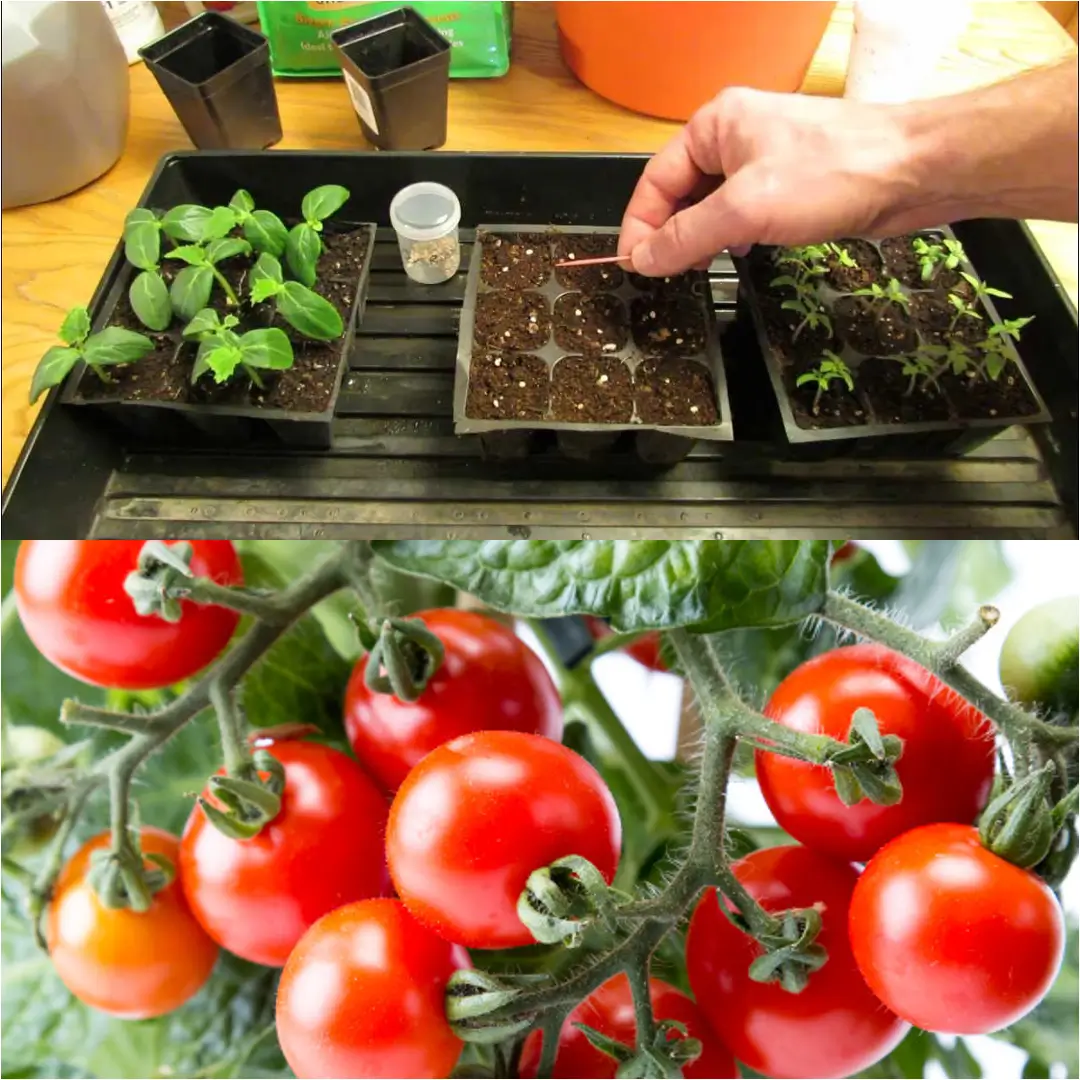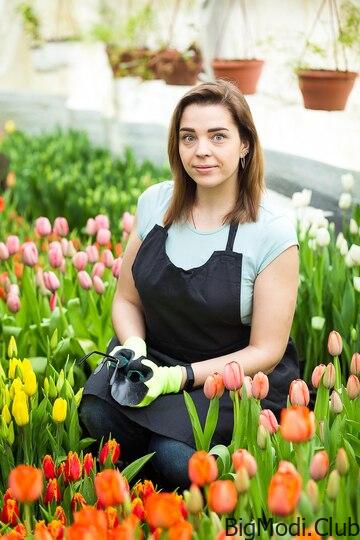Starting tomato seeds indoors is the secret to a bountiful garden filled with juicy, ripe tomatoes. If you’ve ever wondered how to grow these delicious fruits, this guide will walk you through every step of the process. You’ll learn exactly how to start tomato seeds indoors, why timing is critical, and how to care for your seedlings to ensure they grow into healthy, productive plants. Let’s dive into the details and get those tomato seeds sprouting!
Why Timing Is Critical for Starting Tomato Seeds Indoors
Timing is everything when it comes to starting tomato seeds indoors. Tomatoes are long-season crops, meaning they need plenty of time to grow, flower, and produce fruit. If you start them too late, you’ll miss out on their full potential. But if you start them too early, you may end up with leggy, overgrown seedlings that are ready to go outside before the weather has warmed up.
When to Start Tomato Seeds Indoors
The ideal time to start your tomato seeds is about six to eight weeks before your area’s last expected frost date. Why? Because it gives your tomato seedlings enough time to develop strong roots and a healthy set of leaves before they’re transplanted outdoors. For example, if your last frost date is around May 10, you’ll want to start your seeds by March 29.
By starting early, your plants will be well-established and ready to thrive once the warmer weather arrives. It’s like getting a head start in a marathon—being early puts you in the lead!
The Seed Sowing Process: How to Start Tomato Seeds Indoors
Now that you’ve got your timing down, it’s time to move on to the actual process of starting tomato seeds indoors. Don’t worry, it’s easier than it sounds! With just a few simple tools and some basic steps, you’ll have seeds ready to sprout in no time.
Step 1: Choose Your Containers
Tomato seeds can be started in individual pots, seed-starting trays, or even upcycled containers like egg cartons or yogurt cups. Just make sure that whatever you choose has proper drainage holes. If you’ve used the containers before, be sure to clean and sterilize them to avoid any potential contamination from last season’s plants.
Step 2: Prepare the Soil
Fill your containers with a high-quality seed-starting mix. This mix is lighter than regular potting soil, allowing for better aeration and moisture retention. Lightly moisten the mix before adding it to your containers, leaving about a quarter inch of space at the top. This will make watering easier later on.
Step 3: Plant the Seeds
Place two to three tomato seeds indoors into each pot or planting cell. If you’re using a seed-starting tray, space the seeds about an inch apart. To make handling the tiny seeds easier, pour them into a shallow dish and use tweezers to place them into the soil. This will help you avoid accidentally planting too many seeds in one spot.
Step 4: Cover the Seeds
Tomato seeds don’t need light to germinate, but they do need to be covered with soil. Use about 1/8 inch of soil to lightly cover the seeds. You can also poke small holes into the soil, drop in the seeds, and gently push the mix back to cover them.
Step 5: Water the Seeds
Water is crucial for starting tomato seeds indoors. Lightly mist the soil with a spray bottle to help the seeds settle in, being careful not to flood the soil and wash the seeds out of place. Keep the soil consistently moist but not waterlogged.
Step 6: Provide Warmth
Tomato seeds love warmth, so place the containers in a warm spot such as on top of a refrigerator or near a radiator. Alternatively, you can use a seed-starting heating mat to ensure the soil stays warm. Just be sure not to put the containers directly on a heat source like a radiator, as this could damage the seeds.
Ideal Growing Conditions for Tomato Seeds
Creating the right environment is crucial for successfully starting tomato seeds indoors. Temperature, moisture, and light all play important roles in the germination and early growth stages.
Warmth for Germination
Tomato seeds will typically germinate in 5-10 days when kept in a warm environment (around 70-80°F or 21-27°C). If you’re looking to speed up the process, you can soak the seeds for a few hours before planting, though it’s not necessary. Heating mats and humidity domes are also great tools to help with germination.
Once the seeds have sprouted, remove any humidity domes and turn off the heating mats. Leaving them on could dry out the seedlings or cause them to overheat.
Moisture Maintenance
Keeping the soil moist is essential during the germination process. Water your seeds lightly every day or two using a spray bottle or a vessel with a gentle stream. Bottom watering (where you water from underneath the pots) can also help ensure the seeds aren’t disturbed by heavy streams of water.
Caring for Tomato Seedlings: Nurturing Your Plants
Once your tomato seeds have sprouted, it’s time to focus on caring for the seedlings to ensure they grow strong and healthy. Here’s how to take care of your tomato seedlings indoors.
Light, Light, and More Light
Tomato seedlings need plenty of light to grow. Aim for 12-15 hours of bright, direct light every day. If you don’t have a sunny windowsill, consider using grow lights. Rotate the pots occasionally so the seedlings grow straight and don’t lean toward the light.
Watering Your Seedlings
As your seedlings grow, continue to water them regularly. Keep the soil moist, but make sure the pots never sit in a pool of water. This can lead to root rot, which could kill your plants. On the other hand, don’t let them dry out completely, as this can weaken the plants.
Thinning Out Seedlings
Once your tomato seedlings reach about 2-3 inches in height and have developed one or two sets of true leaves, it’s time to thin them out. Keep only one seedling per pot or planting cell. Choose the healthiest-looking plant, and gently snip the others at the soil line with a pair of scissors. This will prevent overcrowding and give the remaining seedling plenty of room to grow.
Fertilizing Tomato Seedlings
After your seedlings have a few sets of true leaves, you can start fertilizing them with a diluted, organic liquid fertilizer once a week. This will give them a boost of nutrients, helping them grow stronger and healthier.
Repotting Seedlings
If your tomato seedlings start to look overgrown or rootbound (when the roots outgrow the container), it’s time to transplant them into larger pots. When repotting, bury the seedlings a little deeper in the new pots. This encourages more roots to grow along the buried stem, resulting in a sturdier plant.
Hardening Off: Preparing Tomato Seedlings for Transplanting
Before you move your tomato seedlings to the garden, you’ll need to harden them off. This process helps your plants adjust to the outdoor conditions and prevents transplant shock.
How to Harden Off Tomato Seedlings
Start by placing your seedlings outside for a few hours each day, gradually increasing the amount of time they spend outdoors over the course of one to two weeks. Bring them back inside at night to protect them from cold temperatures. After this period, your tomato plants will be toughened up and ready to move to their permanent outdoor home.
Starting your tomato seeds indoors is one of the most rewarding steps in growing a healthy tomato garden. From timing the planting just right to providing the ideal growing conditions, each part of the process contributes to the success of your harvest. Whether you’re a beginner or a seasoned gardener, these steps will help you grow strong, resilient plants that produce an abundance of delicious tomatoes. So what are you waiting for? Get those seeds started, and soon enough, you’ll be enjoying the fruits of your labor—literally!
FAQs:
1. How do you germinate tomato seeds indoors?
To germinate tomato seeds indoors, start by filling small pots or seed trays with a light, well-draining seed-starting mix. Moisten the mix before planting. Place 2-3 seeds in each pot, covering them lightly with about 1/8 inch of soil. Water the pots gently, ensuring the soil stays moist but not soggy. Place the containers in a warm spot (around 70-80°F) to encourage germination. Covering them with a humidity dome or plastic wrap can help retain moisture. After about 5-10 days, you should see the seeds sprouting.
2. Should I soak tomato seeds before planting?
Soaking tomato seeds indoors before planting is not strictly necessary, but it can help speed up germination. If you choose to soak them, do so for about 4-6 hours in room-temperature water. This softens the seed coat, making it easier for the seedling to break through during germination. After soaking, dry the seeds lightly on a paper towel before planting them in the seed-starting mix.
3. How do you germinate tomato seeds quickly?
To germinate tomato seeds quickly, maintain a warm temperature (70-80°F) and ensure consistent moisture in the soil. Using a heating mat can help keep the soil warm and accelerate germination. Additionally, covering the seeds with a humidity dome or plastic wrap helps retain moisture and creates a humid environment conducive to germination. Once the seeds sprout, remove the cover to prevent mold and allow them to acclimate to their surroundings.
4. What is the best month to start tomato seeds?
The best month to start tomato seeds indoors typically falls about six to eight weeks before your last expected frost date. For example, if your last frost date is around May 10, you should start your tomato seeds indoors between mid-March and late March. This timing allows the seedlings to grow strong and be ready for transplanting outdoors when the weather warms up.


